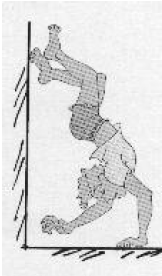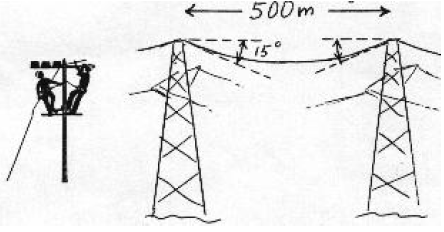Clicking on the answer bar reveals the correct answer
Romeo sets off in his spaceship to marry Juliet, who lives on the planet Lovelon, 10 light-years away from earth. He can accelerate at 15 m/s2, and must decelerate at the same rate, in order to stop at Lovelon. Unknown to him, Juliet has taken an earlier shuttle back to Earth and she will wait there. Since there is no communication, Romeo will have to travel back again! Romeo left yesterday, on April 30, 1997. What is the earliest year in which they can be wed? Romeo and Juliet are both classical persons, and they ignore any relativistic effects! 1 light-year is about 9.46 x 1015 m.

An overweight acrobat, "weighing" in at 115 kg, wants to perform a single hand stand. He tries to cheat by resting one foot against a smooth frictionless vertical wall. The horizontal force there is 130 N. What is the magnitude of the force exerted by the floor on his hand?
Answer in N
For each breath that you take, how many of the air molecules would also have been breathed by the patron saint of Physics, Sir Isaac Newton during his lifetime (1642-1727)?
The atmosphere is about 8 km high, and the molecules in the air each occupy a space representing a little cubic box about 33.3 x 10 -9 m along a side. The earth's radius is 6.37 x 106 m.
Make reasonable assumptions for any data that you need!

The ice storm this winter in the province of Quebec strained many wires to the breaking point. In a particular situation, the transmission pylons are separated by 500 m of wire. The top grounding wire is 15° from the horizontal at the pylons, as in the diagram, and has a diameter of 1.5 cm. The steel wire has a density of 7860 kg/m3. When ice (density 900 kg/m3) built up on the wire to a total diameter of 10.0 cm, the wire snapped. What was the breaking stress (force/unit area) in N/m2 in the wire at the breaking point?
You may assume the ice has no strength.
Romeo is landing back on Earth to claim his bride, Juliet. His spaceship is descending vertically at 50 m/s and he is 500m up when he throws a bouquet of Lovelon flowers horizontally (from his point of view) out of his ship to land near Juliet, who is waiting at the dockport, 40 m from his landing spot. How fast must Romeo throw his flowers in m/s so that they land at Juliet's feet? (Lovelon flowers are very slippery, and do not experience air resistance. They can also absorb quite a shock on landing and still look fresh!).
A teenager is downloading pirated, compressed songs in MP3 format from the Internet. Each song is about 3 minutes long when played, and needs about 2.9 megabytes of computer storage. To fill a CD requires about 70 minutes of music. If a 56K modem is being used which gives on average about 30 kilobits/sec of data flow, how many minutes does it take to download a full CD's worth of songs, ignoring setup times and filename entries? A byte represents 8 bits.
"A Decade of SIN Plus Sixteen" is a compilation of past exams and solutions, from 1969 - 1994.
Any order concerns should be sent to wstore@uwaterloo.ca